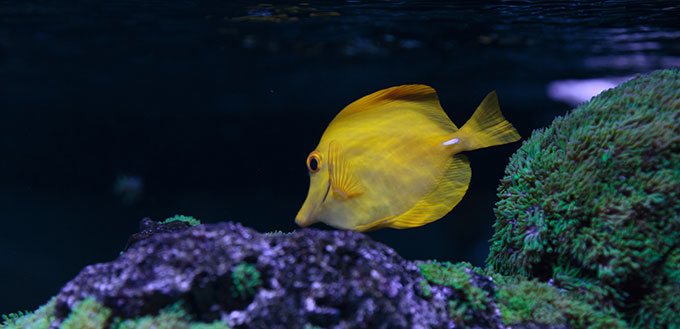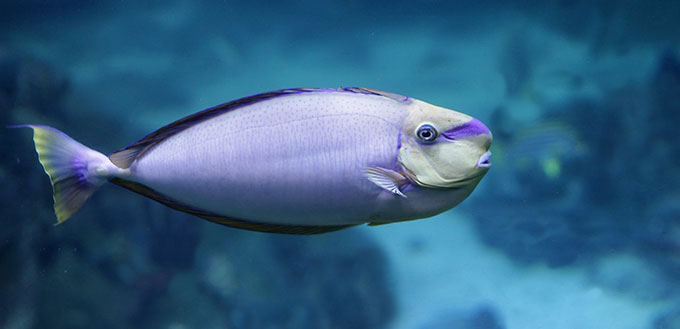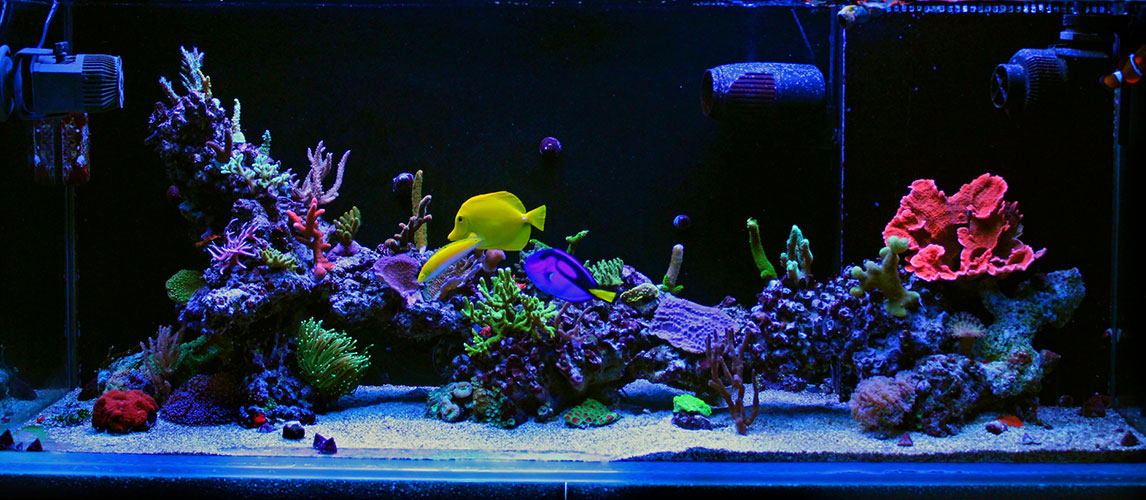How Do Fish Breathe?
Animals are fascinating. We are all united by our basic need to intake the substances that support energy production, and expel the waste products of this process. Put simply, all animals need to eat, poop and breathe! But exactly how each species does this can differ hugely. Dogs and cats are mammals like us, so we share a lot of biological characteristics. But what about your fish? They must need to breathe, but how are they doing it?
What is Breathing?
The most confusing aspect of fish breathing is that they live underwater. If we tried to breathe underwater, we would simply drown! Breathing is widely understood to be the process of taking in, and expelling air using noses and mouths. Fish, on the other hand, do this with water, and use their gills.
Technically, this means that fish do not breathe, because this term is usually associated with the intake of air. They do, however, respire. Obviously, you can still say that fish breathe as it a widely used colloquial term, but understanding the difference is the first step to understanding the process of fish respiration, and how it differs from our mammal respiration.
Fish Respiration
Respiration is one of the bodily processes that allow organisms to produce energy. Another such process, for example, is eating. For mammals, respiration means the process in which an animal takes in oxygen and expels carbon dioxide. Oxygen is essential for burning our fuel, better known as the sugars and fatty acids that was in the food we have consumed.
In fish, this is done in water, rather than in air. So how do they extract oxygen from water? You might think that they breathe in the two oxygen molecules that make up H20, but the respiration process does not have the necessary energy to break up these bonds. Instead they breath in un-bonded oxygen molecules that have been dissolved into the water. It is worth noting that water usually has only 5% the amount of oxygen when compared to air.
A fish breathes in this oxygen and expels carbon dioxide back into the water. Over time, oxygen from the air will dissolve into the water to replenish some of the oxygen that has been turned into carbon dioxide. Algae and other underwater plants can also help with this as they respire by taking in carbon dioxide and releasing oxygen.
This is also why it is possible to suffocate fish if you do not provide a means for oxygen to re-enter into the water. This is why you should never transport a fish in a plastic bag for a long period of time. It is also one of the reasons you must regularly provide your pet fish with fresh water.

The Process of Fish Respiration
Now we understand the general respiration system that allows fish to breathe, we should look at the detailed process of fish respiration. First of all, you need to understand a process known as osmosis. If you remember high school biology, you may be remember a concept called ‘diffusion’.
Diffusion is the principle that substances move from an area of high concentration to low concentration. If you put red food dye in a glass of water without mixing it, and leave it for a while, you will come back to a pink glass of water. Osmosis is a similar process, but involves the movement of a substance, in this case oxygen, over a semi-permeable membrane.
The benefits of osmosis over diffusion is the existence of a semi-permeable membrane of the gills which can be used to prevent the intake of other, larger, substances that may be in the water, including the H2O molecules themselves.
As water has less dissolved oxygen in it than the air we breathe, fish have to work a little harder to get their oxygen. To give you a full idea of the process, here is a step-by-step description.
- Fish use their gill covers, known as opercula, and mouth to increase the flow of water over their gills by sucking in water and pushing it out over the gills.
- This water flow is pushed in the opposite direction of their blood to ensure that the blood that comes into contact with the water has a low concentration of oxygen to promote as much osmosis of oxygen into the blood stream as possible.
- The oxygen is then taken in by the hemoglobin in the red blood cells, which transports the oxygen throughout the fish’s body to wherever it needs to go. It knows where to go because it will naturally diffuse into areas that has a low concentration of oxygen, and a high concentration of carbon dioxide.
- Oxygen is used to burn glucose in the body for energy, and this process results in byproducts of water and carbon dioxide. Animals absorb the water for other use, and potentially expulsion via urine, and carbon dioxide must be breathed out.
- Just as the oxygen did, carbon dioxide hitches a ride in the red blood cells of the fish until they come to an area of low CO2 and diffuse or osmosis out of the body.
Potential Health Problems
A fish’s respiratory system can be quite delicate, and there are quite a few health problems that can occur due to problems with they oxygen intake. As awareness is the first step towards prevention, we have included a list of the most common issues to watch out for.
- Low Oxygen Levels
Even if you do everything right – you provide plants and regularly change a proportion of their water, your fish may still have problems with oxygen levels. High temperatures, for example, can reduce oxygen because warm water holds less oxygen than cold water. At its most extreme, this is what happens when you boil water.
The main symptom of your fish struggling to breath is if they seem to come to the surface to breathe because this is where the water meets the air, and thus where oxygen dissolves into water, providing the greatest concentration of oxygen. Be aware that some breeds of fish naturally gravitate towards the top of a tank or pond so may not be having any problems.
You can help prevent issues such as this through improving the movement of the water in their environment. Water that moves dissolves more oxygen into it as more water comes into contact with their air. Waterfalls are often used for this purpose, but you can also invest in a commercial pump for more efficient aeration.

- Carbon Dioxide Toxicity
Your fish does not just need water with a a high volume of oxygen to survive, but needs a relatively low level of carbon dioxide in their environment. This is because carbon dioxide can lower the pH in the habitat to make it acidic. Generally, a carbon dioxide concentration of more than 20g per liter will be toxic for fishes. Symptoms of this toxicity include:
- Unresponsiveness to stimuli, such as a net or food
- Lethargy
The source of the excess carbon can vary, but it is worth noting that if you don’t have plant life in your environment, you can introduce them as a preventative measure because plants respire by taking in carbon dioxide and expelling oxygen. You can also add various pH monitors to your tank to ensure you notice if an imbalance occurs. If you find that there is too much carbon dioxide in your fish’s environment, try forceful aeration. This means stirring up the water to force the carbon dioxide into the atmosphere.
If you know the water source that you use when you change your fish’s water is not the cause of this imbalance, you can also try changing their water. Make sure you do this in the normal way, however, by taking out a proportion and replenishing it. Water changes can be very stressful for fish, and you should definitely not attempt to change their entire tank or pond.
- Hydrogen Sulfide Toxicity
Another unfortunately side effect of low oxygen levels is hydrogen sulfide toxicity. Habitats with depleted oxygen can encourage the growth of certain bacteria. These bacteria release hydrogen sulfide (H2S), which is toxic for fish. An environment with excess H2S will smell of sulfur, and the fish will:
- Be thin
- Look sickly
- Have damaged gills
As with other oxygen issues, you can prevent, and solve, hydrogen sulfide toxicity by ensuring better aeration. You may wish to use a pump, a waterfall, or manual forceful aeration. You should also keep their environment free from debris, as this is where bacteria usually takes hold.
- Gas Bubble Disease
There are many other gases that can also build up in your fish’s environment. For cold water systems, an excessive amount of any dissolved gasses can result in gas bubble disease as the gas impacts your fish’s blood stream. This disease can damage tissue and can be fatal. The symptoms of this disease include:
- Tiny gas bubbles in the eyes, fins or gills of your fish
This problem is triggered by spikes in water temperature, faulty water pumps and excessive algae growth. This shows that preventative solutions for aeration problems can, in themselves, cause issues. You must be careful to maintain your air pumps and plant life to keep your fish as healthy as possible. Treatment of the disease requires forceful aeration, to remove the excess gases, and correcting the cause of the issue.
Source:
- How Fish Breathe, Pet MD







